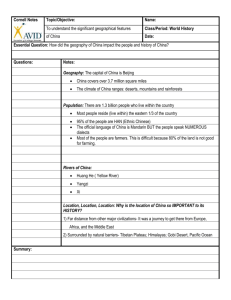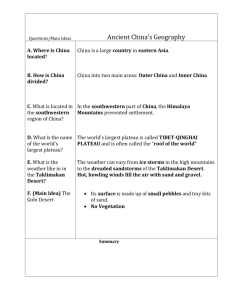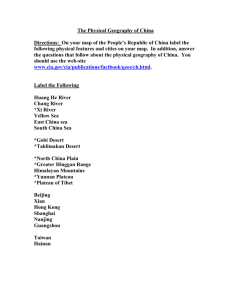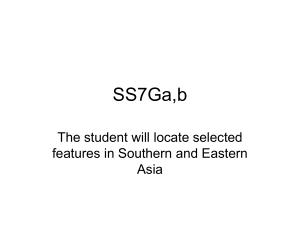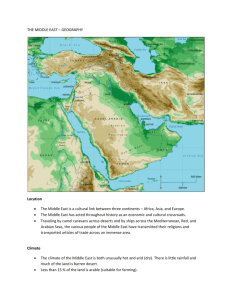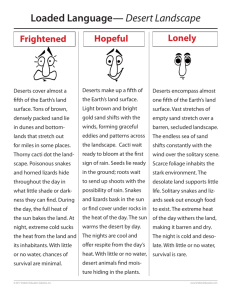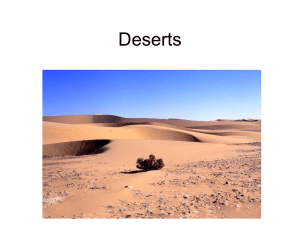Chapter 19
advertisement
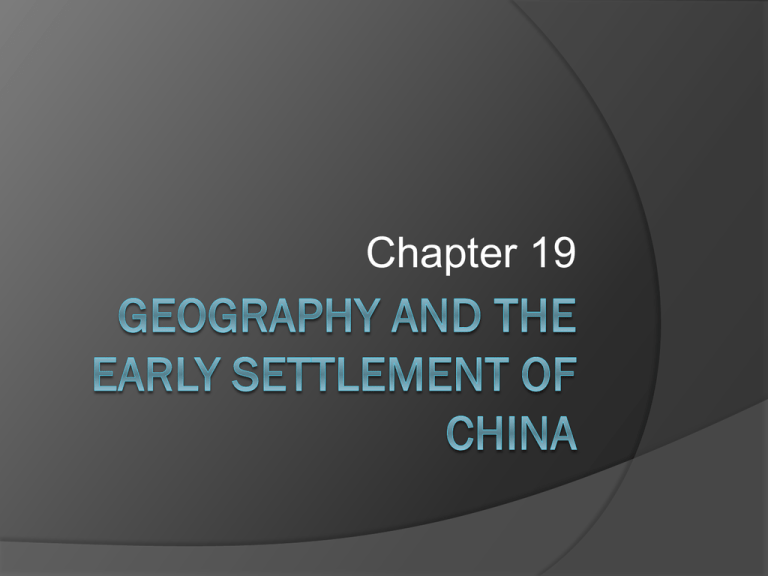
Chapter 19 Studying China To understand Chinese history and geography, it’s helpful to divide it into 2 main areas: Outer China and Inner China. Most of Chinese history involves only Inner China. The 2 areas did not become 1 country until the 1600s C.E., but the geography of both areas affected the early settlement and history of China. Overview Modern day China is home to about 1.2 billion people, more than any other country. That’s 1/5 of the world’s population! It was much smaller in ancient times, though. China is a land of extremes with weather varying from ice storms in the mountains to sand storms in the deserts. The Tibetan Plateau The southwestern part of Outer China is dominated by the Tibetan Plateau. The plateau is so large it covers almost a quarter of the land in China. This area is often called “The Roof of the World” because of its extremely high elevation. Because the land is so high, the air is thin and dry, and it stays cold with snow even in the summer. The Himalayas are on the southern edge of the plateau. The Gobi Desert The northwestern part of Outer China is known for its great deserts, including the Gobi and Taklimakan. Stretching over 500,000 square miles, the Gobi Desert is one of the world’s largest deserts. Most of the Gobi Desert is stony, not sandy. Its surface is made up of small pebbles and tiny bits of sand. The Taklimakan Desert The Taklimakan Desert is about 105,000 square miles and is considered one of the most dangerous deserts in the world. In fact, its name means, “Once you go in, you will not come out.” Sandstorms arise with stunning speed, and legend says that 2 armies and 300 cities are buried 600 feet beneath the sand dunes. In ancient times, this helped protect Inner China from outside invaders. The Huang He (Yellow River) The ground of the Gobi Desert is covered by yellow limestone silt which gets swept away by winds to the North China Plain. There, it mixes with the waters of the Huang He River making it appear yellow. While the Huang He helps farmers, it has also been the source of many disasters for China. In the past 3,000 years, the river is said to have flooded more than 1,500 times! Other Rivers The Chang Jiang is even longer than the Huang He. In fact, its name means “Long River.” The climate around this river is warm and wet making it an excellent region for growing rice. The Sungari is a very deep river. When it freezes in the winter, people use it as a road! Both rivers are used for transporting people and goods by boat. Early Settlement in Ancient China Archeologists believe that the 1st inhabitants of China lived in caves more than 500,000 years ago. When people in China began farming, they settled mostly on the North China Plain in Inner China. This area had plenty of water, fertile soil, and a moderate climate while other regions were either too wet or too dry for farming. Ancient China’s Isolation China’s geography kept the early settlements in Inner China isolated. In the southwest, the towering mountains, rocky plateaus, and cold climate formed a natural barrier. In the northwest, the large deserts were another barrier. Later in Chinese history, the same geographic features that kept China isolated also made it difficult to govern as one unified state.
